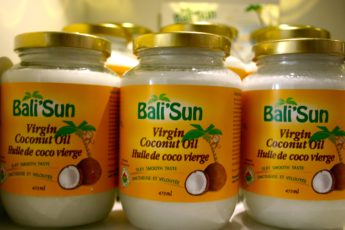It is a topic of great interest, fear and confusion all at once. SOY! Perpetuated by the media and others alike as a food to stay away from, with or without cancer – soy has been deemed as unhealthy and on the no-no list. I can totally appreciate this to a certain extent. But because of all the confusion and mis-information, I would like to give you some insight from my perspective. Also backed up by Dr. Mercola!
Traditionally soy has been used in Asian and Japanese cultures as a condiment and is a species of legumes, widely grown for its edible bean which has numerous uses. Soy is loaded with protein, fat and immune enhancing properties. Nowadays people include soy as the main part of their meal. Not to mention soy has also been added to so many commercial products including milks, cheese and other packaged products as a stabilizer or enhancer. As a result of the health craze regarding soy foods being good, consumers are purchasing anything and everything containing soy thinking they are on the path to health. The issue with this over consumption of soy-based products is that the soy used in the commercial industry is non-organic, genetically modified and so fractionated from it’s original form, that it is no longer a food. No wonder cancer rates have gone up!
So it’s not that SOY is bad for you, it is the type of soy products that we are choosing or over consuming. It is about moderation and choosing the right kinds of soy.
If we look at the traditional fermented forms of soy and choose to eat them in moderation – we can actually enjoy soy foods as they are meant to be enjoyed, as a condiment, garnish or accent to a meal. Eating a slab of soy chicken or TVP (textured vegetable protein) that is the equivalent to a piece of chicken will not allow you to reap the benefits of soy-based products.
Below is a list of healthy forms of soy that you can include in your diet which are the types of soy traditionally used in ancient cultures. And guess what, they are still available today!
Even though I am recommending healthy sources of soy, they should be enjoyed in moderation. Don’t over-consume these items either or you will run into the same health imbalances and problems. Balance is key – and that goes for every type of food!
Tempeh: A fermented soybean cake with a firm texture and nutty, mushroom-like flavor. Enjoy in stir fries, on sandwiches, ground up into “burgers” or just as is!
Miso: A fermented soybean paste with a salty, almond butter-like texture. Make miso soup, put miso in a salad dressing or a marinade.
Natto: Fermented soybeans with a sticky texture and strong, cheese-like flavor. Not too familiar with Natto
Tamari, Braggs or Nama Shoyu: Traditionally made by fermenting soybeans, salt and enzymes. Tamari is the modern, healthy version of soy sauce. So be sure to kick out the kikkoman and replace it with Tamari. It is pure, gives great flavour, you can also get it as low sodium and wheat free! Great in salad dressings, sauces, marinades.
Edamame: Whole soybeans that are not fermented, but are left in their natural form. Be sure to also buy these organic. They make an excellent snack with some sea salt! Or buy them shelled and load them in a salad or cooked vegetable dish!
On the bottom end of this list (and for a reason!) is tofu. This is something that can be enjoyed VERY moderately if you buy the right kind. Moderately can even mean 1-2x per month!
Sprouted Tofu: When buying tofu it is important to only get it sprouted. You can’t get tofu fermented as it is no longer in it’s whole form but at least sprouting tofu makes it more digestible and increases it’s nutritional value. Tofu needs to be cooked and then it can be enjoyed in stir frys, sandwiches, salads, soups or blended into dips.
There is an incredible brand of soy products available that I want to mention as they take their soy seriously — Wild Wood Organics. They have an array of products, but I would just keep it simple and stick with their tempeh and sprouted tofu. Soy yogurt and soy milk is still a packaged processed versions of soy food that I believe should be avoided. Rice milk and coconut yogurt are much higher on the healthy food chain. So choose wisely.
If soy still isn’t your thing or you have allergies to it, remember there are alternatives, the line Coconut Secrets condiments are all coconut based and can replace tamari like I did in my Pad Thai recipe!
Arame Soba Noodle Salad
What’s in it?
1 tsp dried basil
½ tsp dried rosemary
½ tsp salt
8 oz. spelt, kamut or buckwheat soba noodles (wheat or gluten free)
½ cup arame (sea vegetable)
2 cloves garlic
1 tsp gingerroot
¼ cup rice vinegar
¼ toasted sesame oil
3 tbsp tamari
1 cup chopped green onions
1 carrot grated
1 cup of toasted pine nuts or black sesame seeds
1 cup shelled and cooked edamame (optional)
How it’s made!
- Bring large pot of water to boil, add basil, rosemary and salt.
- Add noodles, cook until al dente (8-10 minutes) and drain.
- Soak arame in 1 cup cold water for about 10 minutes, drain.
- In a large bowl, whisk together garlic, ginger, vinegar, sesame oil and tamari
- Add warm noodles to sauce and toss to coat.
- Stir in carrots, onions and arame.
- Sprinkle with toasted pine nuts or sesame seeds.




